A Halloween Guide to London’s Horror Movie Hot Spots
Take a walk around some of cinema's spookiest settings...
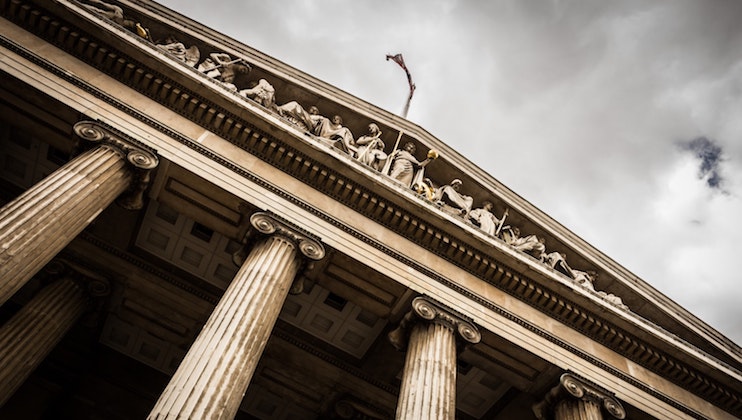
While life in the capital is fraught with numerous mundane terrors (like the District Line at rush hour) it has also been the site of more sinister happenings. The movies have captured the prowling footsteps of serial-killer down London's dank alleyways, shown its subterranean tubes creeping with ghouls, and been the backdrop to a zombie pandemic. So, horror fans, steel yourself for a spine-chilling guide around London’s horror film hot-spots...
The Southbank

Frenzy (1972) is often seen as Alfred Hitchcock’s love-letter to London - if said letter waxed lyrical about a sex-crazed serial killer whose modus operandi was death by tie. Returning to the capital for the first time since 1950, his penultimate film makes giddy use of its familiar London locations. It opens with a sweeping aerial tracking shot westward along the Thames to where Tower Bridge opens onto the South Bank. Then we cut to County Hall as a slick, suited politician promises that the river will soon be clean again. As he is delivering his speech, bystanders notice a woman’s body as it washes up on the shore; “another necktie murder”, one man states drily, as if it were as common as a seagull stealing your chips.
Westminster

Just a stone’s throw away, and forty years later, Westminster Bridge became synonymous with the walking dead - proper zombies, not just your sleep-deprived barrister or somnambulistic sightseer. In 28 Days Later (2002) a man wakes up in hospital (likely St Thomas’, if you’re asking) to find that London has been abandoned. Disoriented, he crosses Westminster Bridge and then walks along Whitehall, finding no signs of human life. Filmmaker Danny Boyle achieved the spectacular feat of capturing a deserted central London by shooting in the early hours of the morning over several summer days.
Speaking of central London, check out this chilling chase scene, from An American Werewolf in London (1981) - more on that below - through Tottenham Court Road underground station...

Earl’s Court
Proof that the area must be situated over an ancient hell-mouth, Earl’s Court has housed a psychotic blonde, one Master of Suspense, and a very hairy manimal.
Catherine Deneuve was seen going seriously stir-crazy at Kensington Mansions in Roman Polanksi’s Repulsion (1965):
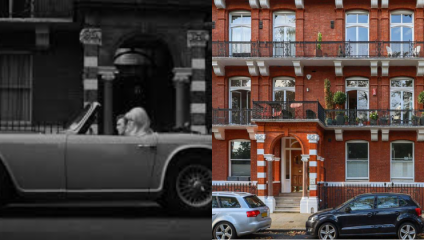
64 Coleherne Road is the house where, in An American Werewolf in London (1981), David Knessler is transformed into the flesh-eating beast. You can walk right by the spot where he says goodbye to his girlfriend before being accosted by two little girls, their dog and a cat - who all seem to know that something is up…

(For extra chills, visit the nearby Brompton Cemetery, one of the Magnificent Seven Cemeteries in London.)
Hardcore horror fans might want to make a pilgrimage to 153 Cromwell Road - this is the house where newly-married horror maestro Alfred Hitchcock lived with his wife from 1926 until their move to America in 1939.
Fulham
You’ll surely feel the dark eddies of the supernatural here in Fulham, childhood home of Harry Potter actor Daniel Radcliffe and the location of a dramatic death in The Omen (1976). Selfie sticks on standby at All Saints Church, on the border of Bishops Park, where Father Brennan is turned into a human kebab by a falling metal rod.

Bishops Park, overlooking the Thames, is also the backdrop for the preceding altercation in which Brennan tries to convince Robert Thorn (Gregory Peck) of his son’s satanic affiliations:

Bloomsbury
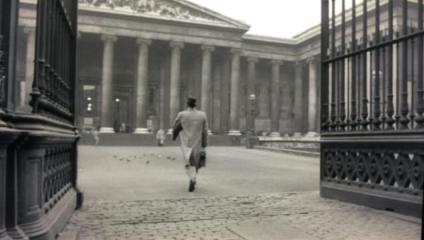
With its leafy green parks, institutions of higher education and literary affiliations, who would believe that Virginia Woolf’s old stomping ground could be home to tube-dwelling cannibals and demon-worshippers too?!
In Jacques Tourneur’s Night of the Demon (1957), parapsychologist John Holden visits the British Museum (shown above) to conduct research inot the occult in its famous Reading Room (shown below; the Reading Room, which houses the museums library and archives, is now only open during selected hours to students and researchers who write in to request access) - it is here that Dr Karswell hands him the runes that will seal his monster-shaped fate...
Take a brisk stroll from here to Russell Square station, where the innocuous facade belies the presence of a ravenous cannibal in Gary Sherman’s Deathline (1972). While the interior scenes were actually filmed in the disused Aldwych station, the station’s exterior is captured in the seedy opening sequence, with Alex’s apartment located at nearby Grafton Mansions on Duke’s Road. The film is also notable for starring two stalwarts of horror - Halloween’s own Donald Pleasance and the legendary Christopher Lee, in a small cameo role.
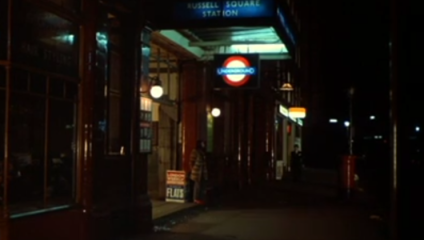
Highgate
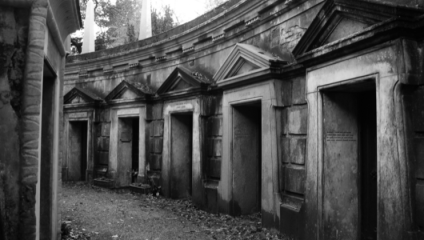
To really soak in a spooky vibe, head to Highgate Cemetary. The ostentatious cemetary is the final resting place of such legendary figures as Christina Rosetti, Karl Marx and (most recently) George Michael - it is now open to the public for a fee (£10 per adult) because, for a long time, it had to be abandoned after going bankrupt in the 1960s. Stories of vampires, ghosts and satanic rituals in the overgrown greenery were published in the papers and, while we can’t prove of that, the famous Hammer Films studio was known to use the location in a string of its films in the 1970s - most famously The Abominable Dr Phibes (1971). It’s not hard to imagine grisly, gruesome goings-on in this place dubbed ‘the great garden of death’ - as well as being the site of such B-Horror films as Taste the Blood of Dracula (1970), Tales from the Crypt (1972), Frankenstein & the Monster from Hell (1974) and From Beyond the Grave (1974), Highgate Cemetary has also featured in more recent films that need a gothic tinge, including Dorian Gray (2009) and, less horribly, The Crimes of Grindelwalk (2018).